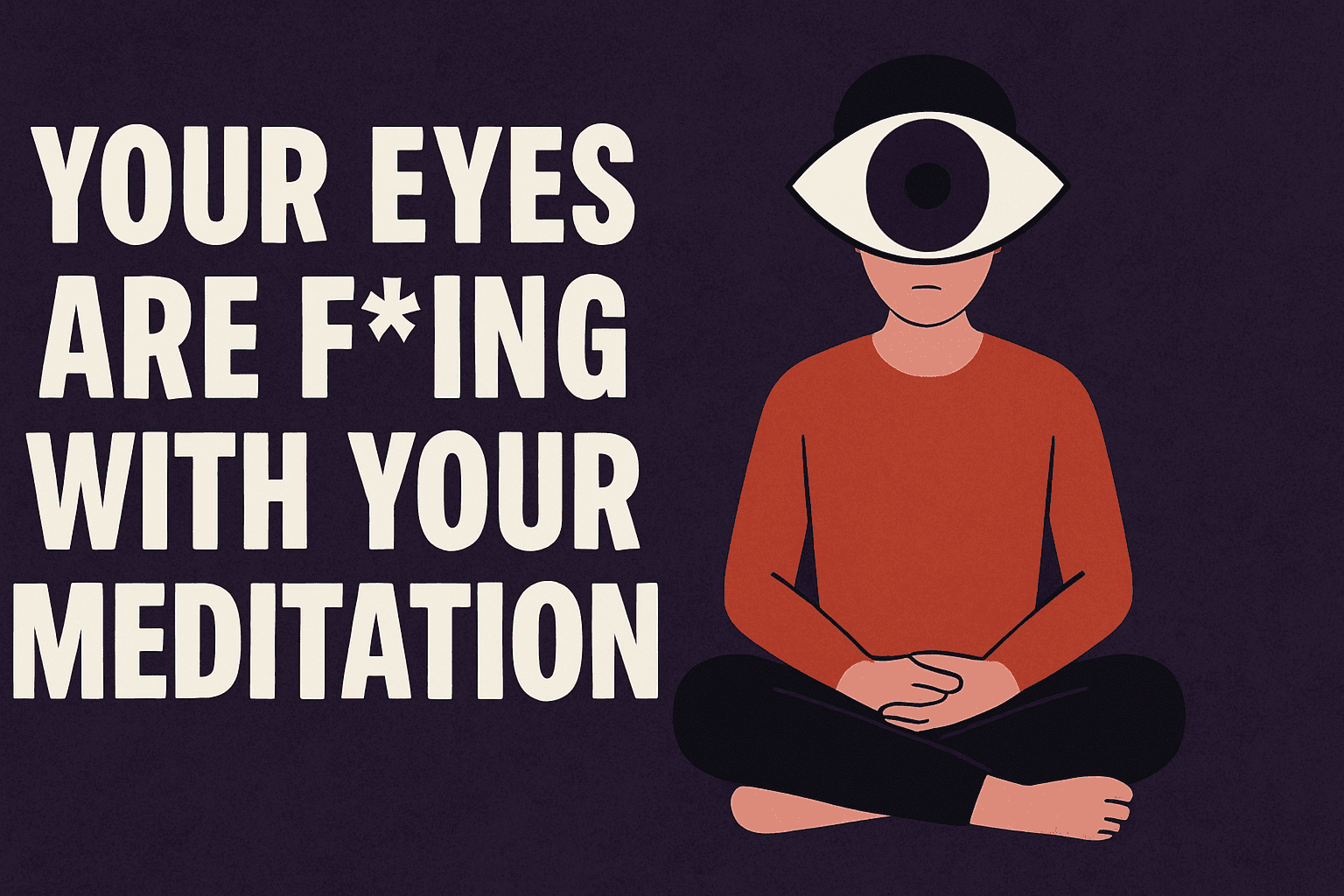Why Being Here Now Means Letting Go of the One Who’s Looking
You sit down to meditate. Eyes closed. Still. Quiet.
But someone’s still… watching.
Most people don’t realize it, but the way human vision is wired is messing with their ability to be fully present. Our forward-facing eyes, combined with a brain that prioritizes visual data, create a subtle but persistent orientation toward looking at experience, even when our eyes are closed.
We think we’re meditating, but what we’re often doing is observing. Monitoring. Positioning. The body is still, but awareness is leaning forward, waiting for something, and comparing, trying to have the “right” experience.
This is not a flaw. It’s conditioning. It’s the structure of how most of us live: in front of ourselves.

Phenomenology Breaks the Habit of Looking
When we explore the phenomenology of vision, something subtle but radical begins to happen. We notice the difference between seeing and looking. Between hearing and listening. Between sensing and monitoring.
And eventually, we discover something even deeper:
Immediacy doesn’t arise through observation. It arises through contact.
Not contact with something. Contact as something.
This shift is not conceptual. It’s ontological. You don’t move into immediacy—you realize you were always already here, but your awareness was subtly fixated on experience as something happening “over there,” even inside your own body.
What Does This Have to Do With Meditation?
Everything.
If you’re meditating by focusing attention, tracking breath, or trying to stay “present,” chances are you’re still facing experience. Still oriented through the visual lens of the body—forward, above, outside.
And presence doesn’t live there.
Presence is not “in front.” It’s not “inside.”
It’s here. But to be here, you have to let go of the one who’s trying to get here.
And that includes letting go of the orientation of the eyes, even the imagined eyes of inner observation.
Be Here Now Wasn’t Just a Slogan
Ram Dass said it beautifully. But “Be Here Now” isn’t a pointer toward mental stillness. It’s a doorway into the collapse of orientation. Where now is not a moment in time, but the absence of mental reference. And being is not what you observe—It’s what remains when there’s no observer.
When the “vision” of the meditator drops away, you’re not left with an experience. You’re left with immediacy. Not the content of the moment, but the substance of it.
Vision is beautiful. However, it can also serve as a veil.
When you stop trying to see, you start to sense.
When you stop trying to sense, you are.
Let the seer dissolve,
And the seen… will disappear too.
What remains is not vision.
It’s reality.
A Day of Sacred Sound
Join us for A Day of Sacred Sound Practice on July 19, 2025—an immersive online event unlike any typical meditation or chanting workshop. This isn’t about repeating sacred syllables. It’s about becoming the vibration itself. Through HU, OM, AUM, and the fusion of HU-OM, we’ll enter four distinct sound streams that activate the subtle centers of knowing through the belly, heart, and head. Each one-hour session invites you into direct, embodied presence—no techniques, no efforting: just breath, sound, and the disappearance of the one who’s looking. Attend one, two, or all three sessions for just $15. One moment of resonance can change everything.
Register: HarpGnosisBooks@gmail.com
Learn more: Day of Sacred Sound
John Harper is a Diamond Approach® teacher, Enneagram guide, and a student of human development whose work bridges psychology, spirituality, and deep experiential inquiry. He is the author of The Enneagram World of the Child: Nurturing Resilience and Self-Compassion in Early Life and Good Vibrations: Primordial Sounds of Existence, available on Amazon.

